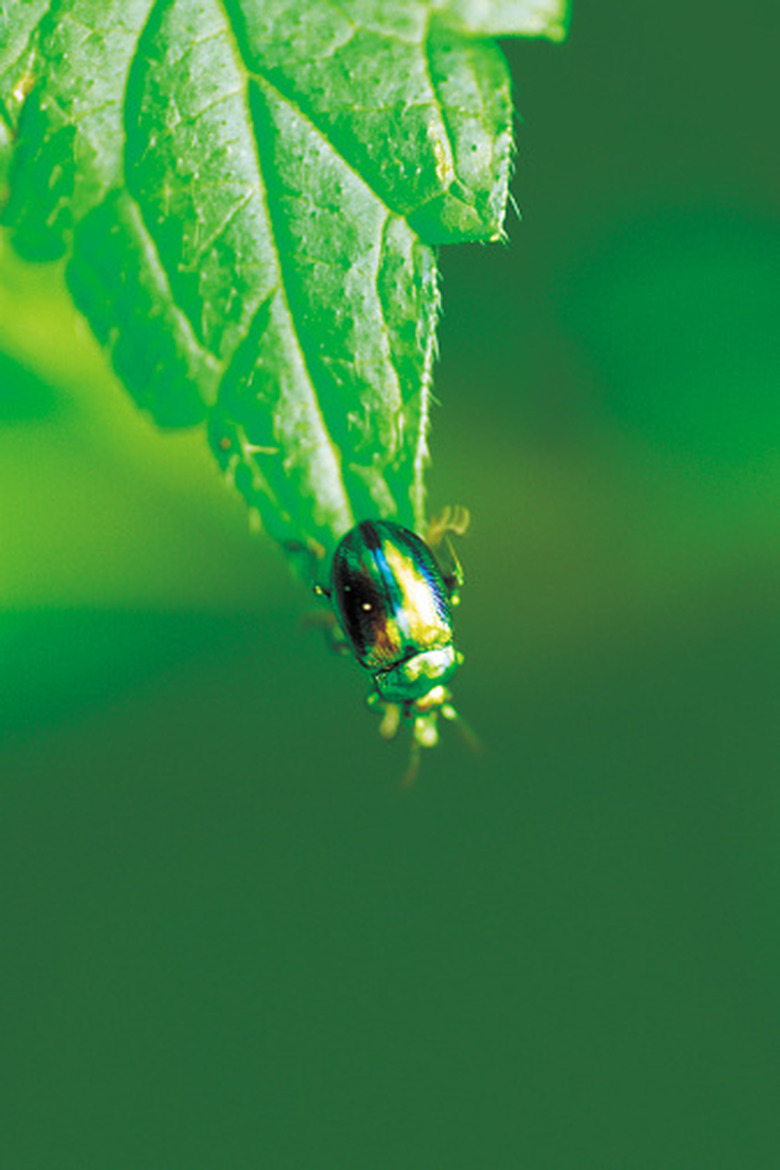Repellent For Fig Beetles
Fig beetles are metallic green insects that are known to attack soft skin fruit such as figs, particularly in late summer. They will also eat overripe peaches, grapes, tomatoes, plums and apricots. Adult fig beetles scrape holes in the fruit in order to eat the flesh inside. An excrement stain will remain on the skin of the fruit. Most experts do not recommend using chemical insecticides to repel fig beetles because they do not appear to work. Fortunately, known attractants and best growing practice recommendations can be used instead to either trap or otherwise make the environment inhospitable for the pest.
Breeding Habitat
Fig beetles spend their juvenile state in soil, commonly beneath compost or manure piles, where they feed on organic matter. This pest has become increasingly prevalent over the past several decades, likely corresponding to the rise in organic gardening. Organic gardeners commonly use backyard compost heaps, which are an ideal breeding ground for the fig beetle.
- Fig beetles are metallic green insects that are known to attack soft skin fruit such as figs, particularly in late summer.
- Organic gardeners commonly use backyard compost heaps, which are an ideal breeding ground for the fig beetle.
Growing Practice Recomendations
The most effective form of fig beetle elimination is directed at the pest while it is in its grub stage. During spring months, remove as much organic material on the soil surface near fig trees. Turn compost piles frequently, which will expose any fig beetle grubs that are present. If grubs are spotted in compost, flood the soil, keeping it saturated for two consecutive days. Then let the soil surface dry and harden in order to trap any adults before they emerge. This will effectively manage an infestation problem by killing all the fig beetle grubs.
Fig Beetle Traps
Adult fig beetles might fly from a distance to attack mature figs. To minimize the attraction, harvest figs early and often and do not allow fallen fruit to remain near trees. Some fig growers trap adult beetles using a 1:1 mixture of water and grape, peach or pineapple juice. The juice is placed in a container with a wire cone trap. Be aware that it's possible this trapping practice can attract more fig beetles from surrounding areas.
- The most effective form of fig beetle elimination is directed at the pest while it is in its grub stage.
- To minimize the attraction, harvest figs early and often and do not allow fallen fruit to remain near trees.
Identification Issues
Fig beetles, Cotinis mutabilis, are frequently confused with the slightly smaller green June beetle, Cotinis nitida. The two insects differ slightly in treatment options so it is important to distinguish between the two closely related species. Fig beetles are restricted geographically from California to Texas. Green June beetle are found from Texas to New York. In addition, adult fig beetles are also present later in the summer than green June beetles.
References
- University of California Integrated Pest Management Program: Green fruit beetle—Cotinis mutabilis; R. L. Coviello et al.; July 2006
- University of Arizona Cooperative Extension; Insect and Disease Identification: Insects – F-M; September 2010
- Texas A&M Agrilife Extension; Green June Beetle; Fran Pontasch, et al.
